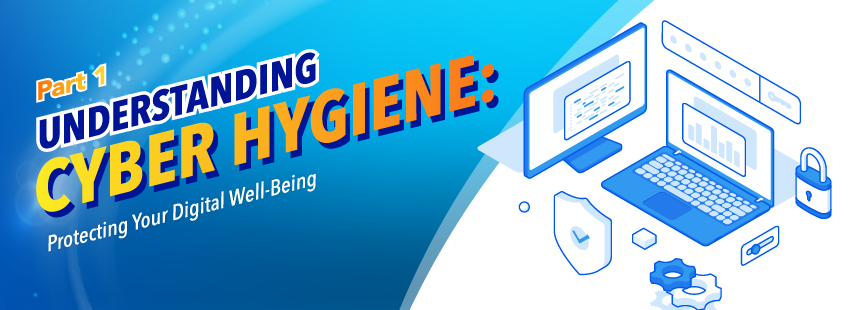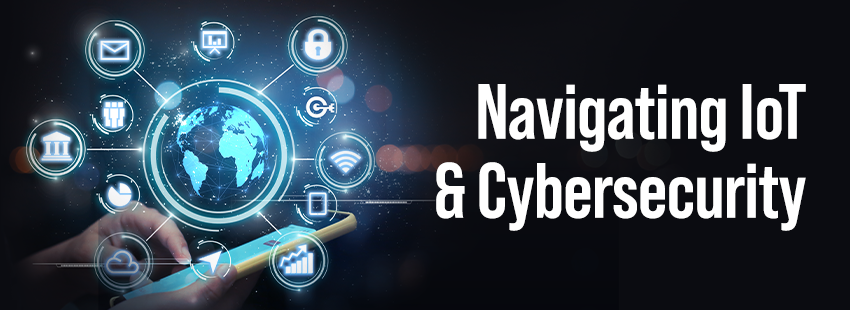Introduction
Every day, technology plays a central role in our lives; it’s crucial to prioritize our digital well-being and safeguard ourselves from online threats. Cyber hygiene, a term encompassing a range of practices and habits, empowers individuals and organizations to maintain digital security. In Part 1 of our blog series on Cyber Hygiene, we explore cyber hygiene’s fundamental concepts and importance, focusing on password security, software updates, safe browsing habits, and data protection measures.
What is Cyber Hygiene?
Cyber hygiene is the practices and habits individuals and organizations adopt to protect their digital well-being. Just as personal hygiene routines help maintain physical health, cyber hygiene practices ensure the security and integrity of our online presence. By following these practices, we can mitigate the risks posed by cyber threats and safeguard our sensitive information from unauthorized access.
Password Security: The First Line of Defense
One of the fundamental aspects of cyber hygiene is password security. Passwords are the first defense against unauthorized access to our online accounts and sensitive information. Creating strong and unique passwords is essential. Avoid using easily guessable information such as names, birthdates, or common words. Instead, opt for a combination of uppercase and lowercase letters, numbers, and special characters.
Furthermore, using different passwords for each online account is crucial to prevent a single incident from compromising multiple accounts. While remembering multiple passwords can be challenging, password managers offer a convenient solution. Password managers generate and securely store complex passwords for various accounts, allowing users to access them with a master password.
The Importance of Software Updates
Regularly updating software, operating systems, and applications is critical for maintaining good cyber hygiene. Software developers often release updates to address security vulnerabilities and improve the overall functionality of their products. Neglecting these updates can leave your devices and data exposed to cyber threats.
Outdated software allows cybercriminals to exploit vulnerabilities and gain unauthorized access to your systems. Ensure you have the latest security patches and defenses by staying compliant with software updates. Automating the update process can help streamline this task and ensure your devices are consistently protected.
Safe Browsing Habits: Navigating the Digital Landscape
Practicing safe browsing habits is an integral part of cyber hygiene. The Internet offers a wealth of information and services but presents various risks. Adopting safe browsing practices helps protect against malicious websites, phishing attempts, and malware infections.
Verifying website security is crucial before sharing any sensitive information. Look for the padlock symbol and “https” in the website’s URL, indicating that the connection is encrypted and secure. Be cautious of clicking on suspicious links or downloading files from untrusted sources, as they can introduce malware to your devices.
Phishing attempts, where cybercriminals deceive individuals into revealing sensitive information, are prevalent. Be wary of unsolicited emails, messages, or phone calls requesting personal or financial information. Only share sensitive data if you can verify the request’s legitimacy through alternate channels.
Data Protection Measures: Safeguarding Your Information
Data protection is a fundamental aspect of cyber hygiene. In today’s data-driven world, protecting our personal and sensitive information is paramount. You can minimize the risk of data breaches and unauthorized access by implementing effective data protection measures.
Regularly backing up your data is crucial. In the event of hardware failure, cyberattacks, or accidental deletion, backups ensure you can recover important files and minimize potential loss. Cloud storage services and external hard drives provide convenient options for creating backups and ensuring data redundancy.
Encryption is another powerful tool for data protection. It converts your information into a coded form that can only be accessed with the correct decryption key. Use encryption tools and features available in operating systems or third-party applications to secure your sensitive data, especially during transmission or storage on external devices.
Conclusion
Understanding the concept of cyber hygiene is the first step towards safeguarding your digital well-being. By prioritizing password security, staying up to date with software updates, practicing safe browsing habits, and implementing data protection measures, you can significantly enhance your online security and protect yourself from cyber threats.
In Part 1 of our blog series on Cyber Hygiene, we have explored the essential aspects of cyber hygiene and its significance in today’s digital landscape. Stay tuned for the upcoming parts of the series, where we delve deeper into each topic and provide actionable tips to help you maintain a strong cyber hygiene routine.
Remember, your digital security is in your hands. Good cyber hygiene practices can create a safer online environment for yourself and others.






